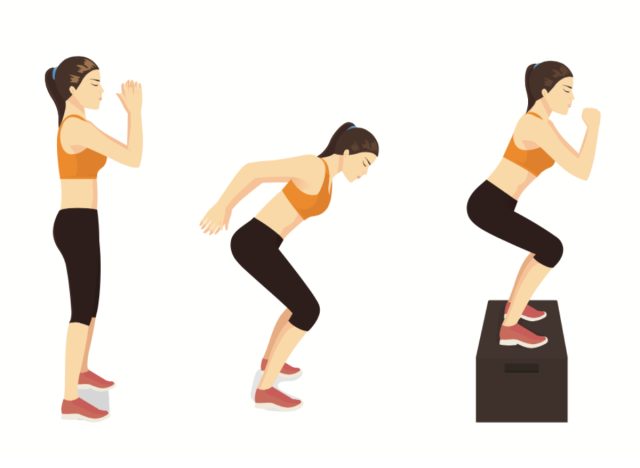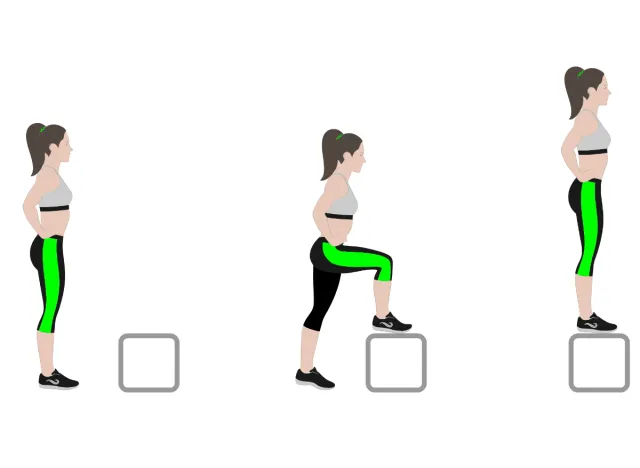5 Best Jogging Workouts To Boost Endurance & Stamina

Jogging is one of the most effective and accessible forms of cardiovascular exercise. Whether you're a seasoned runner or just starting out, jogging offers numerous health benefits, from improving cardiovascular health to boosting mental well-being. However, if you want to take your performance to the next level and build endurance and stamina, you must incorporate specific jogging workouts into your routine.
Simply running at a steady pace isn't enough to make significant fitness gains. By mixing up your jogging workouts and training techniques, you can challenge your body in new ways, helping you run longer, faster, and more efficiently.
Building endurance and stamina requires a mix of steady-state runs, interval training, and strength exercises that target the muscles used in running. Each type of workout serves a different purpose, from increasing your ability to sustain effort over long distances to improving your body's capacity to recover quickly after bursts of speed.
While many joggers stick to familiar routes and paces, varying your training plan can unlock new levels of performance, making you a more well-rounded runner. Integrating strength-building exercises into your jogging routine is also crucial for injury prevention, as stronger muscles can better support your joints and absorb the impact of running.
I've put together five jogging workouts to help you boost your endurance and stamina. Each workout combines specific jogging techniques with complementary strength exercises to maximize your gains. Whether you're training for a race or simply aiming to improve your overall fitness, these workouts will give you the tools you need to become a stronger, more efficient runner.
Let's dive into how these jogging workouts can transform your performance and how adding variety to your routine can lead to lasting improvements in both endurance and stamina.
Workout #1: Steady-State Jogging Workout
How It Helps: Steady-state jogging focuses on maintaining a consistent pace over a longer duration. This workout improves aerobic capacity, builds cardiovascular endurance, and enhances your ability to jog steadily without fatigue.
What You Need: Your body and a flat surface for jogging.
The Routine:
- Steady-State Jogging
- Bodyweight Squats
- Walking Lunges
- Calf Raises
1. Jogging Exercise: Steady-State Jogging

- Warm up with a light 5-minute walk or dynamic stretches.
- Start jogging moderately, aiming for a level where you can hold a conversation but still feel your heart rate elevate.
- Maintain this pace for 20 to 30 minutes, keeping your breathing steady and your strides relaxed.
- Cool down with a 5-minute walk or stretch.
2. Bodyweight Squats

How It Helps: Bodyweight squats build strength in the glutes, quads, and hamstrings, all of which are critical for maintaining strong strides during jogging.
- Stand with your feet shoulder-width apart.
- Lower your hips as if sitting in a chair, keeping your chest up and knees behind your toes.
- Push through your heels to return to a standing position.
- Perform 3 sets of 15 reps.
3. Walking Lunges
How It Helps: Walking lunges strengthen your quads, hamstrings, and glutes while improving balance and stability, essential for maintaining proper form during jogging.
- Stand tall with your feet together and hands on your hips or by your sides.
- Step forward with your right foot and lower into a lunge, keeping your right knee at a 90-degree angle.
- Push through your right heel to bring your left foot forward into the next lunge.
- Continue alternating legs.
- Perform 3 sets of 12 lunges per leg.
4. Calf Raises

How It Helps: Calf raises strengthen the calves, which are important for pushing off the ground and maintaining stability while jogging.
- Stand with your feet hip-width apart.
- Slowly lift your heels off the ground, rising onto the balls of your feet.
- Hold for a second, then lower your heels back to the floor.
- Perform 3 sets of 20 reps.
Workout #2: Fartlek Training
How It Helps: Fartlek training combines periods of faster-paced running with periods of slow jogging or walking. This workout improves both your aerobic and anaerobic endurance, teaching your body to recover quickly after bursts of speed.
What You Need: Open space or a treadmill where you can alternate between fast and slow jogging.
The Routine:
- Fartlek Intervals
- High Knees
- Skater Jumps
- Lateral Lunges
1. Jogging Exercise: Fartlek Intervals
- 1Warm up with a 5-minute jog at a relaxed pace.
- Alternate between 1 minute of fast-paced running (around 80% effort) and 2 minutes of slow jogging or walking.
- Repeat this cycle for 20-30 minutes, aiming for 6-8 fast intervals.
- Cool down with a 5-minute walk or light jog.
2. High Knees

How it helps: High knees improve hip mobility and strengthen the hip flexors and core, aiding in better running form and leg drive during sprints.
- Stand tall and jog in place, lifting your knees as high as possible.
- Engage your core as you pump your arms.
- Maintain quick, controlled movements for 30 seconds.
- Perform 3 sets of 30 seconds.
3. Skater Jumps
How It Helps: Skater jumps strengthen your glutes, quads, and improve lateral movement, which helps build agility and stability during running.
- Stand on your right leg with your left leg behind you.
- Jump to the left, landing on your left leg, while swinging your right leg behind.
- Immediately jump back to the right leg in a controlled motion.
- Perform 3 sets of 12 jumps per side.
4. Lateral Lunges

How It Helps: Lateral lunges target your inner and outer thighs, glutes, and hamstrings, improving your stability and reducing injury risk.
- Stand with your feet hip-width apart.
- Step your right foot out to the side, bending your right knee while keeping your left leg straight.
- Push through your right heel to return to the starting position.
- Repeat on the other side.
- Perform 3 sets of 12 lunges per side.
Workout #3: Tempo Run
How It Helps: Tempo runs help you build your lactate threshold, which is your body's ability to sustain a faster pace for longer periods. This workout helps you maintain a challenging pace without fatiguing too quickly.
What You Need: A flat, open space or treadmill.
The Routine:
- Tempo Run
- Bulgarian Split Squats
- Plank with Shoulder Taps
- Glute Bridges
1. Jogging Exercise: Tempo Run
- Warm up with a 5-minute light jog.
- Run at a "comfortably hard" pace, one that feels sustainable but requires focus, for 15-20 minutes.
- Keep your breathing controlled and strides steady, pushing through fatigue but avoiding a full-out sprint.
- Cool down with a 5-minute light jog or walk.
2. Bulgarian Split Squats

How It Helps: Bulgarian split squats strengthen your quads, glutes, and hamstrings while improving balance, a key element in running efficiency.
- Stand in front of a bench or step and place the top of your left foot on the surface behind you.
- Lower into a lunge with your right leg, keeping your knee aligned over your ankle.
- Push through your right heel to return to standing.
- Perform 3 sets of 12 reps per leg.
3. Plank with Shoulder Taps

How It Helps: This exercise strengthens your core and stabilizes your shoulders, both of which are essential for maintaining good posture during long runs.
- Start in a high plank position with your hands directly under your shoulders.
- Tap your left shoulder with your right hand while keeping your core tight to prevent rotation.
- Switch sides and tap your right shoulder with your left hand.
- Perform 3 sets of 20 taps (10 per side).
4. Glute Bridges

How It Helps: Glute bridges activate and strengthen the glutes, which are key for generating power during each stride.
- Lie on your back with your knees bent and feet flat on the floor.
- Lift your hips toward the ceiling, squeezing your glutes at the top.
- Lower your hips back down slowly and repeat.
- Perform 3 sets of 15 reps.
Workout #4: Hill Repeats
How It Helps: Running uphill increases the intensity of your workout, strengthening your legs and lungs. Hill repeats improve your strength, power, and endurance, making flat runs feel easier.
What You Need: A hill or treadmill with an incline setting.
The Routine:
- Hill Repeats
- Box Jumps
- Reverse Lunges
- Standing Calf Raises
1. Jogging Exercise: Hill Repeats
- Warm up with a 5-minute jog on flat terrain or a 1% incline.
- Sprint uphill for 20-30 seconds at maximum effort.
- Walk or jog back down the hill to recover for 2-3 minutes.
- Repeat the uphill sprint for 6-8 rounds.
- Cool down with a light 5-minute jog or walk.
2. Box Jumps

How It Helps: Box jumps build explosive leg strength, which is essential for powering up hills during your runs.
- Stand with your feet shoulder-width apart in front of a box or step.
- Lower into a squat, then jump onto the box, landing softly on your feet.
- Step back down and repeat.
- Perform 3 sets of 10 reps.
3. Reverse Lunges
How It Helps: Reverse lunges strengthen your quads, hamstrings, and glutes, which are all vital for hill running.
- Stand with your feet hip-width apart.
- Step back with your right foot and lower into a lunge, keeping your left knee over your ankle.
- Push through your left heel to return to the starting position.
- Perform 3 sets of 12 reps per leg.
4. Glute Kickbacks
How It Helps: Glute kickbacks strengthen the glutes and hamstrings, improving power in your running stride and overall lower-body strength.
- Start on all fours with your hands directly under your shoulders and knees under your hips.
- Keeping your knee bent at a 90-degree angle, lift your right leg behind you until your thigh is parallel to the ground, squeezing your glute at the top.
- Lower your leg back down without letting your knee touch the floor.
- Perform 3 sets of 15 reps on each leg.
Workout #5: Long Slow Distance (LSD) Run
How It Helps: The LSD run helps build endurance by training your body to run for extended periods at a low to moderate intensity. This workout teaches your body to efficiently use energy over longer distances.
What You Need: Open space or treadmill for longer, slower-paced jogging.
The Routine:
- Long Slow Jog
- Step-ups
- Side Planks
- Leg Raises
1. Jogging Exercise: Long Slow Jog
- Warm up with a 5-minute brisk walk or light jog.
- Jog at a slow, relaxed pace for 45-60 minutes, focusing on maintaining an easy, conversational pace.
- Keep your stride light and fluid, and control your breathing.
- Cool down with a 5-minute walk or light jog.
2. Step-ups

How It Helps: The step-up strengthens your quads, hamstrings, and glutes, helping to build the endurance needed for long runs.
- Stand in front of a bench or step.
- Step up with your right foot and bring your left foot to meet it.
- Step down with your right foot, then your left.
- Perform 3 sets of 12 reps per leg.
3. Side Planks

How It Helps: Side planks strengthen the core, which is essential for maintaining good running form during long runs.
- Lie on your side with your elbow directly under your shoulder.
- Lift your hips to form a straight line from your head to your feet.
- Hold for 20-30 seconds, then switch sides.
- Perform 3 sets of 30 seconds per side.
4. Leg Raises

How It Helps: Leg raises strengthen the lower abs and hip flexors, which are important for maintaining stride efficiency during longer runs.
- Lie on your back with your legs extended.
- Lift your legs to a 90-degree angle.
- Slowly lower them without letting them touch the ground.
- Perform 3 sets of 15 reps.









